Guyana’s rich history of green building practices and sustainable architecture showcases its dedication to environmental conservation and sustainable development. The country has recognized the importance of green infrastructure and the need to improve its infrastructure to support a green economy. Green infrastructure includes both natural systems, such as forests and wetlands, as well as engineered systems like green roofs and eco-bridges. Architects are incorporating sustainable technologies, such as solar collectors and water collection systems, into their designs.
Key Takeaways:
- Guyana is committed to green building practices and sustainable architecture.
- Green infrastructure includes natural and engineered systems.
- Sustainable technologies are being integrated into architectural designs.
- Conservation of colonial architecture in Georgetown is facing challenges.
- Public buildings like St. George’s Anglican cathedral and St. Andrew’s Kirk require restoration.
The Importance of Green Infrastructure
The integration of green infrastructure has become increasingly important in Guyana, as it helps minimize the environmental impact of construction and supports sustainable development. Green infrastructure encompasses the use of natural and engineered systems to improve the resilience and ecological integrity of built environments. By incorporating natural systems like forests and wetlands, as well as engineered systems such as green roofs and eco-bridges, Guyana can enhance environmental stability and promote sustainable practices.
Green infrastructure provides numerous benefits for Guyana. It attracts investments by showcasing the country’s commitment to sustainable development and environmental stewardship. This, in turn, promotes the growth of green businesses and sustainable industries, stimulating economic opportunities. Moreover, green infrastructure helps improve environmental conditions by reducing pollution, managing stormwater runoff, and enhancing air quality. By investing in green infrastructure, Guyana can create a more sustainable, livable environment for its citizens.
“Green infrastructure plays a vital role in minimizing the environmental impact of building in Guyana. It allows us to embrace sustainable development and protect our natural resources for future generations.” – Guyana Green Building Council
Benefits of Green Infrastructure
The integration of green infrastructure brings a wide range of benefits to Guyana. Firstly, it helps conserve biodiversity and preserve ecosystems by providing habitats for various plant and animal species. Secondly, green infrastructure contributes to climate change mitigation by reducing greenhouse gas emissions and increasing carbon sequestration. Thirdly, it enhances the quality of urban spaces and promotes recreational activities, improving the overall well-being of communities. Lastly, green infrastructure supports sustainable water management by conserving and reusing water resources, reducing the strain on traditional water supply systems.
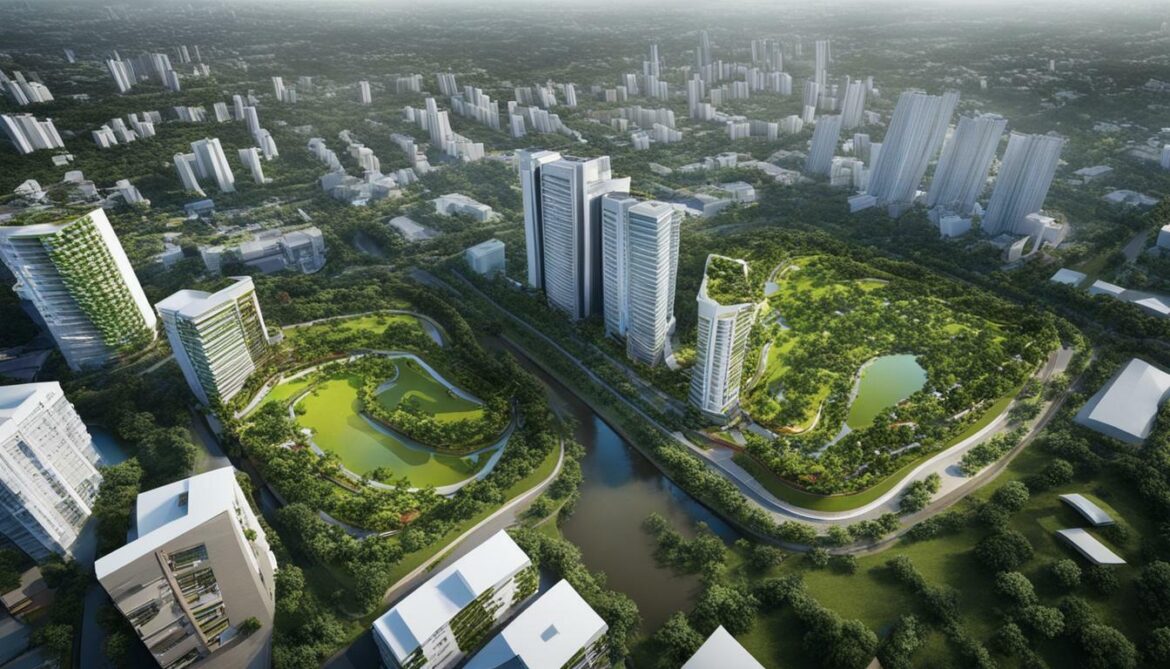
Overall, the incorporation of green infrastructure in Guyana is crucial for sustainable development. By prioritizing eco-friendly construction practices and preserving natural resources, the country can create a greener, more resilient future.
Incorporating Sustainable Technologies into Design
Sustainable technologies are being seamlessly integrated into architectural designs in Guyana, ensuring the creation of energy-efficient buildings that align with the country’s commitment to sustainable development. Architects in Guyana are embracing innovative sustainable construction techniques to reduce energy consumption and promote a greener way of living.
One such technology is the use of solar collectors, which harness the power of the sun to generate electricity and heat water. By incorporating solar panels into building designs, architects can provide a renewable source of energy and reduce reliance on non-renewable resources. This not only helps to mitigate the environmental impact of building but also reduces energy costs for building occupants.
Another sustainable technology gaining popularity in Guyana is water collection systems. These systems harvest rainwater and store it for various uses, such as irrigation and toilet flushing. By utilizing rainwater, architects can reduce the strain on municipal water supplies and promote water conservation. This is particularly important in a country like Guyana, where water scarcity can be a challenge.
| Sustainable Technologies |
Benefits |
| Solar collectors |
Reduces energy consumption and costs |
| Water collection systems |
Promotes water conservation and reduces strain on municipal supplies |
By incorporating these sustainable technologies into architectural designs, Guyana is not only creating energy-efficient buildings but also setting an example for sustainable development. As the country continues to prioritize eco-friendly construction practices, it paves the way for a greener and more sustainable future.
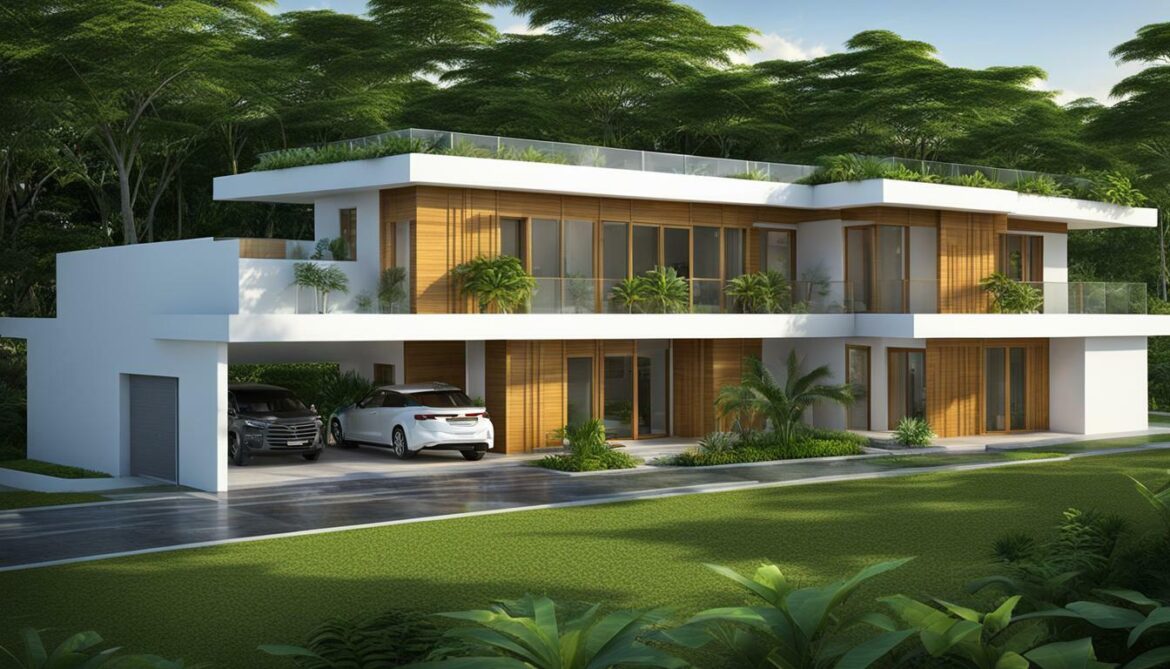
Preserving Guyana’s colonial architecture poses significant challenges due to neglect and insufficient funding, endangering the historical and architectural value of Georgetown’s iconic wooden buildings. These structures, with their unique blend of European and Caribbean influences, tell the story of Guyana’s colonial past and serve as a reminder of the country’s rich heritage. However, the lack of resources and attention has resulted in the deterioration of many of these buildings, threatening their existence.
One of the primary challenges in preserving Guyana’s colonial architecture is the ongoing issue of neglect. Without regular maintenance and care, wooden structures are particularly vulnerable to decay and damage from the tropical climate. Many of these buildings have fallen into disrepair, with rotting timbers, crumbling facades, and collapsing roofs. The lack of funds allocated towards preservation further exacerbates the problem, as there are limited resources available for restoration projects.
To address these challenges, it is crucial for Guyana to secure the necessary funding and support for the conservation of its colonial architecture. Public-private partnerships and international collaborations can play a vital role in raising awareness and mobilizing resources for restoration efforts. By investing in the preservation of these buildings, Guyana not only safeguards its architectural heritage but also attracts tourism and promotes sustainable development.
By prioritizing the preservation of Georgetown’s colonial architecture, Guyana can protect its historical and architectural treasures for future generations. This requires a collective effort from government bodies, non-profit organizations, and the local community to raise awareness, secure funding, and implement restoration projects. With the right investment and conservation strategies, Guyana can ensure that these iconic wooden buildings continue to contribute to the country’s cultural identity and serve as a testament to its rich history.
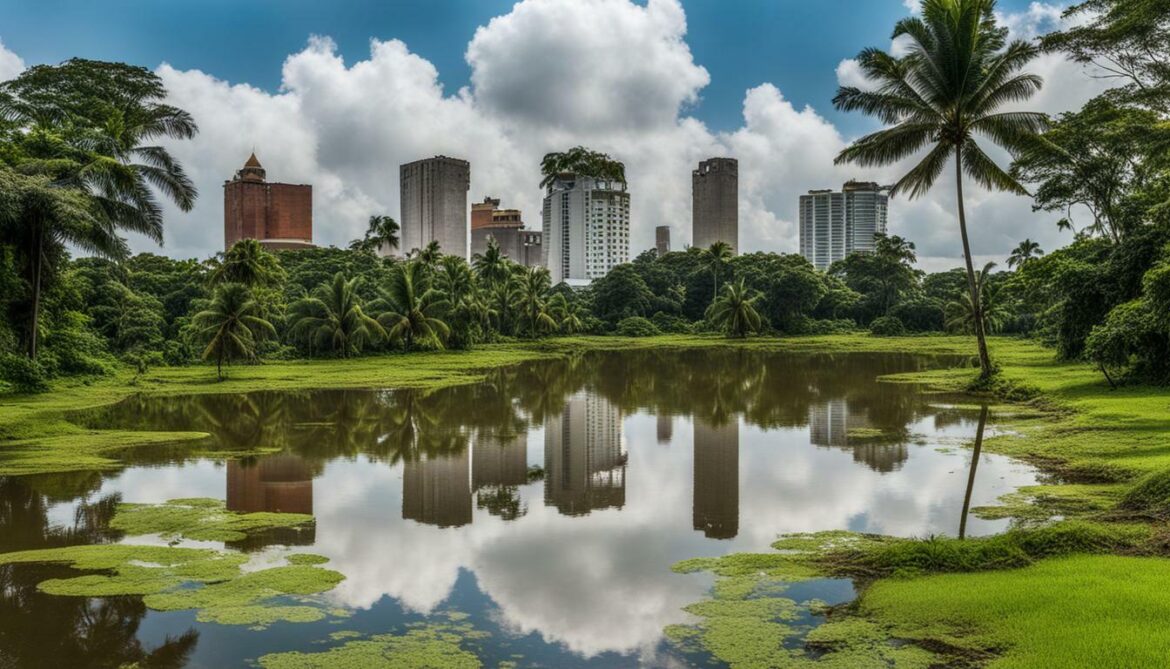
| Challenges |
Solutions |
| Neglect and lack of maintenance |
Raise awareness and allocate resources for regular upkeep |
| Insufficient funding for restoration |
Establish public-private partnerships and international collaborations |
| Vulnerability to tropical climate |
Implement proper preservation techniques and materials |
The Need for Restoration
The restoration of public buildings in Guyana, such as St. George’s Anglican cathedral and St. Andrew’s Kirk, presents an opportunity to showcase the country’s dedication to sustainable building practices. These iconic landmarks not only hold historical and architectural value but also serve as symbols of Guyana’s rich cultural heritage. By undertaking restoration projects with a focus on sustainability, Guyana can preserve its past while embracing a greener future.
Restoring these public buildings requires careful consideration of eco-friendly construction techniques and materials. The use of sustainable building materials, such as reclaimed wood and locally sourced materials, can reduce the environmental impact of the restoration process. Additionally, incorporating energy-efficient systems and technologies can ensure that the restored buildings operate in an environmentally conscious manner.
The restoration of St. George’s Anglican cathedral and St. Andrew’s Kirk can serve as green building case studies for future architectural projects in Guyana. These projects can demonstrate the successful integration of sustainable design principles and techniques, showcasing Guyana’s commitment to sustainable building practices. The restoration efforts can also inspire other countries and communities to value and preserve their own architectural heritage in an environmentally responsible way.
Benefits of Restoration
The restoration of public buildings not only preserves their historical and architectural significance but also brings numerous benefits to Guyana. By showcasing its dedication to sustainable building practices, Guyana can attract investments and create opportunities for green businesses. These restoration projects can also contribute to the improvement of environmental conditions, such as air quality and energy efficiency, in the surrounding areas.
Furthermore, the restoration of public buildings fosters a sense of pride and identity among the local community. It allows residents to connect with their history and heritage while creating spaces for cultural events and activities. By preserving and restoring Guyana’s architectural treasures, the country can nurture a vibrant and sustainable future for generations to come.
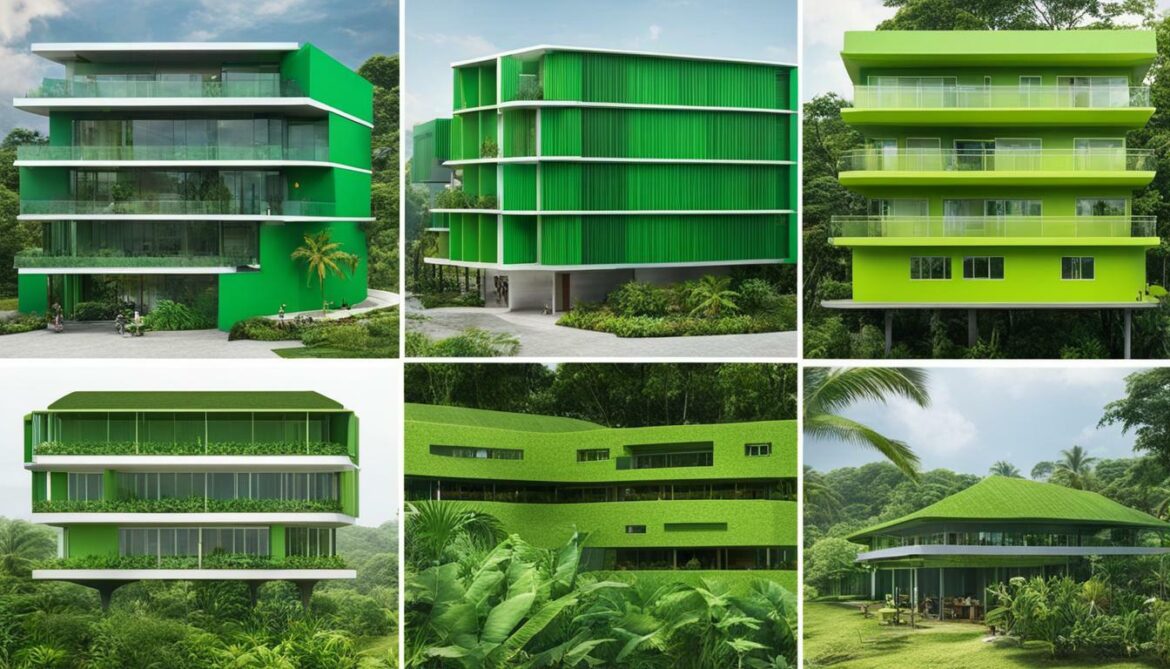
| Key Points |
Benefits |
| Preserving historical and architectural value |
Connecting with cultural heritage |
| Showcasing Guyana’s commitment to sustainable building |
Attracting investments and creating green businesses |
| Improving environmental conditions |
Enhancing air quality and energy efficiency |
| Fostering community pride and identity |
Creating spaces for cultural events and activities |
The Benefits of Green Infrastructure
Guyana’s commitment to green infrastructure has yielded significant benefits, including enhanced economic opportunities and improved environmental conditions. By integrating natural and engineered systems, the country has created a sustainable environment that supports a green economy. Let’s explore the advantages of Guyana’s green infrastructure:
- Attracting Investments: The implementation of green infrastructure initiatives has positioned Guyana as an attractive destination for environmentally conscious investments. The country’s commitment to sustainable development and eco-friendly practices has caught the attention of businesses and organizations seeking to contribute to a greener future.
- Creating Green Businesses: Guyana’s focus on green infrastructure has sparked the emergence of green businesses. From eco-tourism ventures to sustainable agriculture practices, these enterprises not only promote economic growth but also encourage environmentally responsible practices across various sectors.
- Improving Environmental Conditions: Green infrastructure plays a vital role in improving environmental conditions in Guyana. By preserving and restoring natural habitats, such as forests and wetlands, the country enhances biodiversity and mitigates the impact of climate change. Additionally, engineered systems like green roofs and eco-bridges contribute to sustainable water management and ecological connectivity.
Overall, Guyana’s dedication to green infrastructure has far-reaching benefits, creating a harmonious balance between economic prosperity and environmental stewardship. Through continued investment in sustainable practices and the conservation of its natural resources, Guyana is paving the way for a greener and more resilient future.
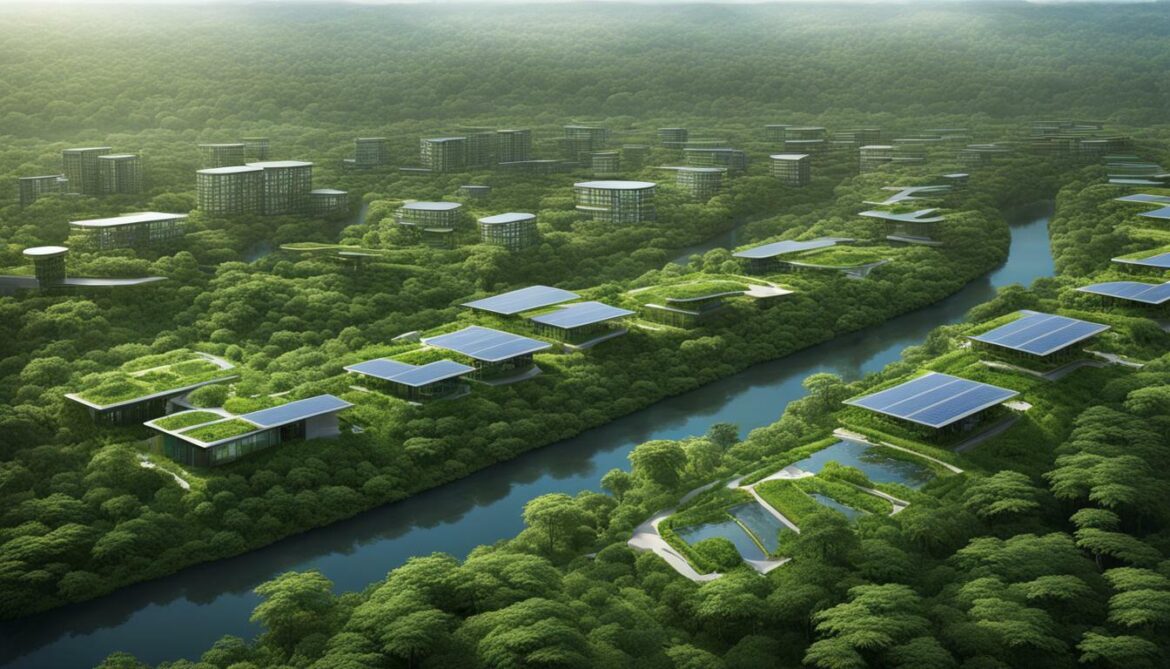
| Benefits |
Description |
| Enhanced Economic Opportunities |
Attracts investments and fosters the growth of green businesses. |
| Improved Environmental Conditions |
Preserves natural habitats, mitigates climate change impact, and promotes sustainable water management. |
| Increased Resilience |
Creates a more resilient environment by integrating natural and engineered systems. |
“Guyana’s commitment to green infrastructure has positioned the country as a leader in sustainable development, attracting investments and creating green businesses that contribute to its economic growth and environmental well-being.”
Conclusion
Guyana’s green building history showcases its dedication to sustainable development, ensuring a greener and more sustainable future for generations to come.
By recognizing the importance of green infrastructure and implementing eco-friendly construction practices, Guyana has made significant progress in its sustainable development efforts. The country’s commitment to incorporating sustainable technologies into architectural designs has led to the creation of energy-efficient buildings that reduce energy consumption and promote sustainable living.
However, challenges remain in preserving Georgetown’s colonial architecture, with neglect and a lack of funding posing threats to the conservation of these culturally significant structures. Urgent restoration efforts are needed to protect the historical and architectural value of buildings such as St. George’s Anglican cathedral and St. Andrew’s Kirk.
Despite these challenges, Guyana’s focus on green infrastructure brings multiple benefits to the country and its communities. Not only does it attract investments and create green businesses, but it also improves environmental conditions, contributing to the overall well-being of the nation.
As Guyana continues to prioritize sustainable development, its rich architectural heritage and eco-friendly initiatives will shape a vibrant and sustainable future, ensuring a greener and more sustainable environment for all.
FAQ
What is green infrastructure?
Green infrastructure refers to both natural systems, such as forests and wetlands, as well as engineered systems like green roofs and eco-bridges, which contribute to environmental stability and resilience.
How are architects incorporating sustainable technologies into their designs?
Architects in Guyana are integrating sustainable technologies such as solar collectors and water collection systems into their designs to create energy-efficient buildings.
What are the benefits of green infrastructure?
Green infrastructure brings multiple benefits, including attracting investments, creating green businesses, and improving environmental conditions.
What challenges are faced in preserving Georgetown’s colonial architecture?
Neglect and a lack of funds are posing challenges in the preservation of Georgetown’s colonial architecture, mainly consisting of wooden buildings.
Which public buildings in Guyana require restoration?
Public buildings in need of restoration include St. George’s Anglican cathedral and St. Andrew’s Kirk, both of which hold historical and architectural significance.
Source Links






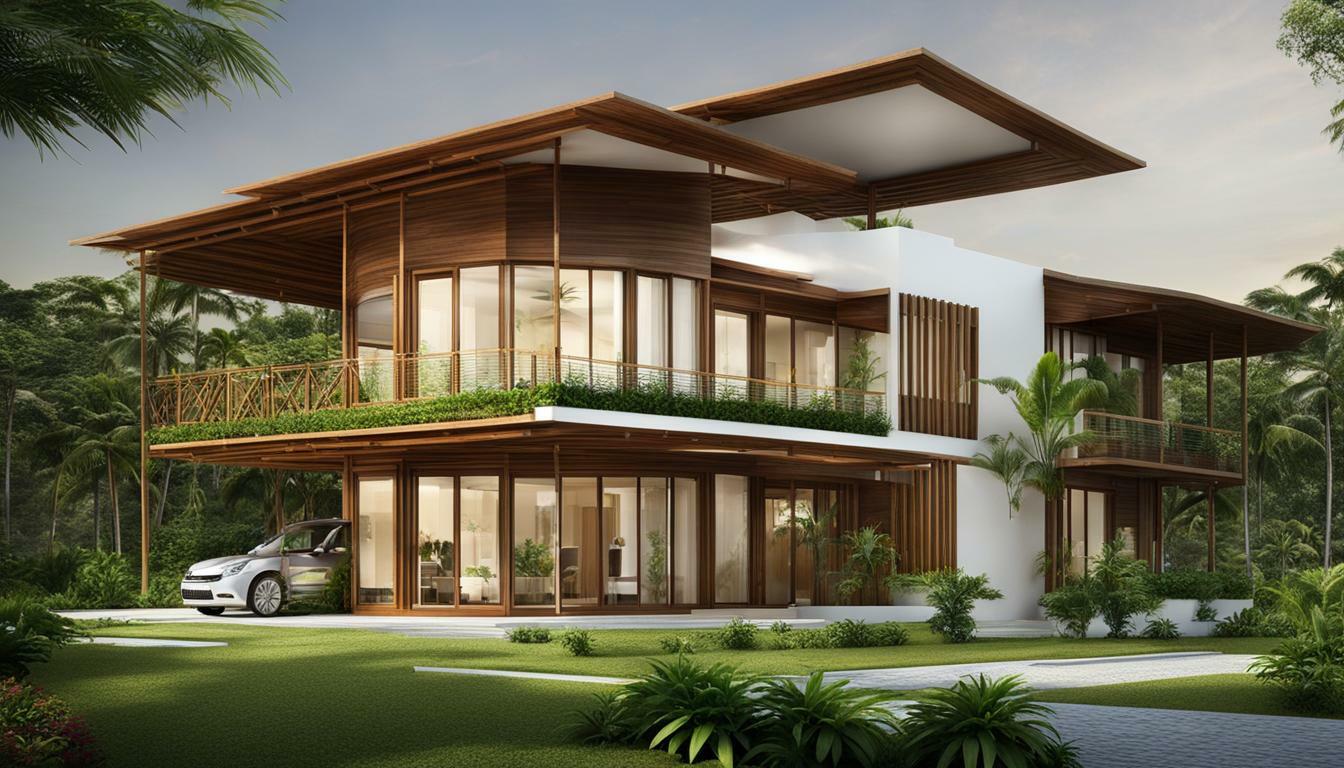
















Post comments (0)